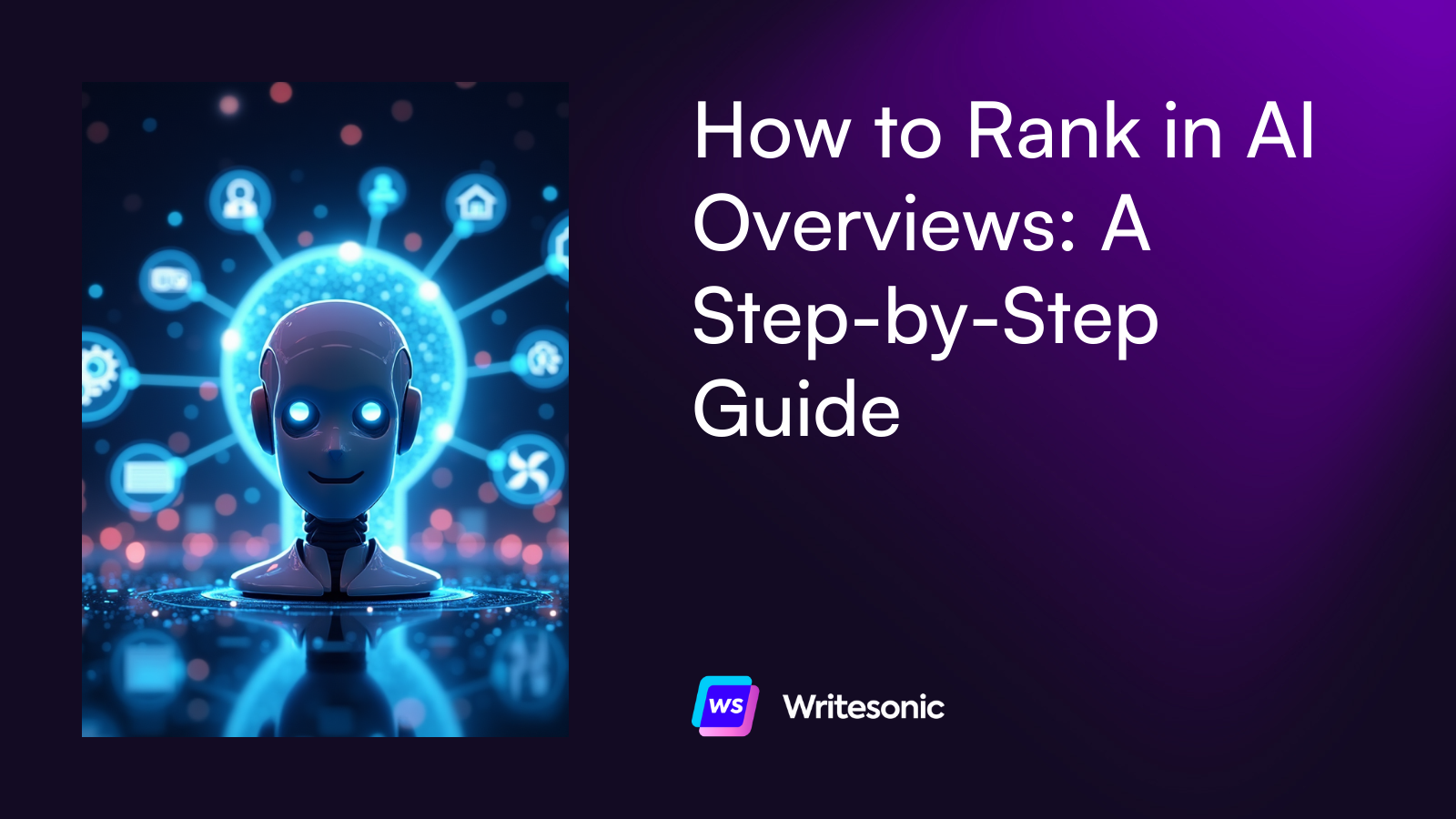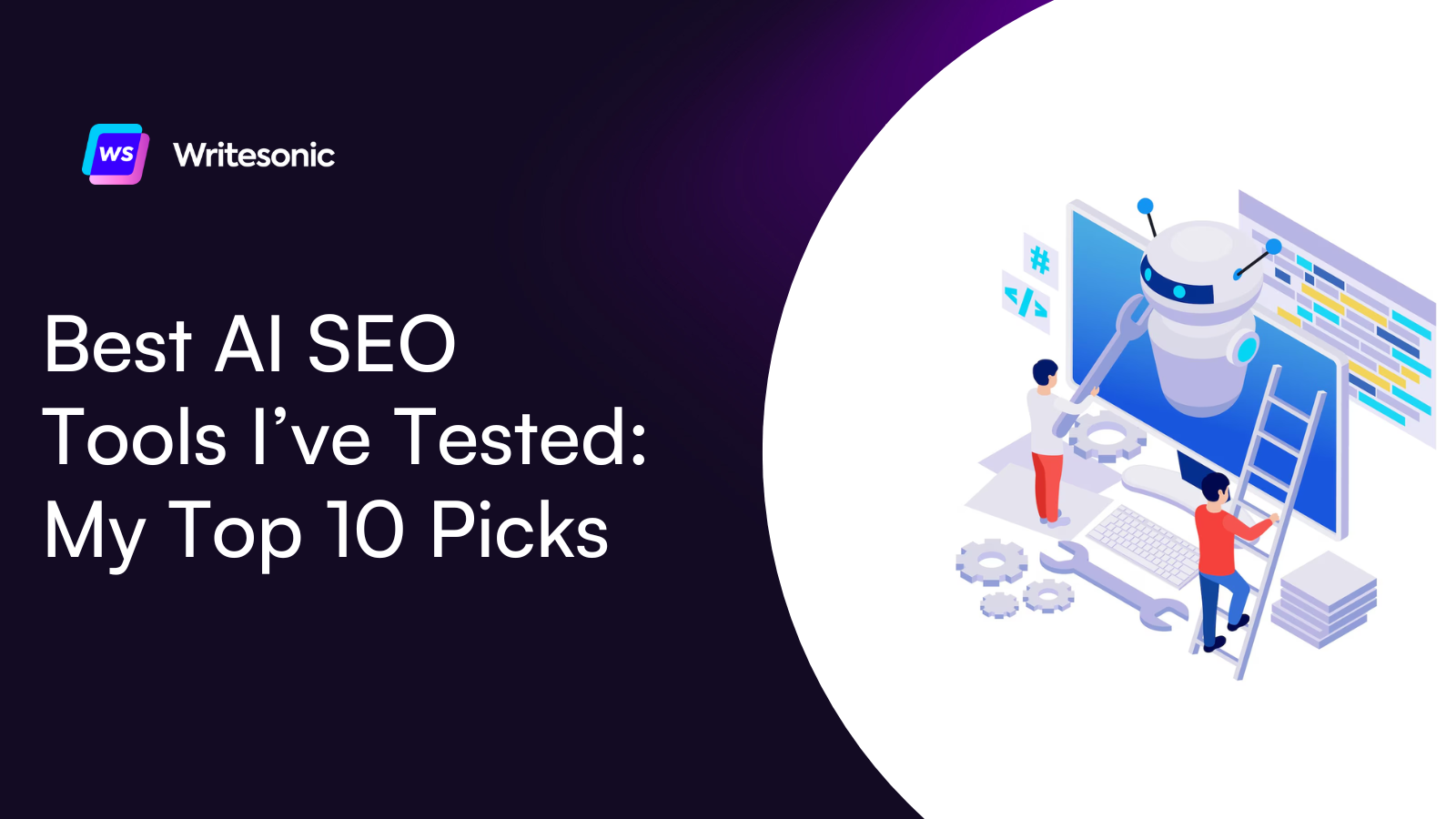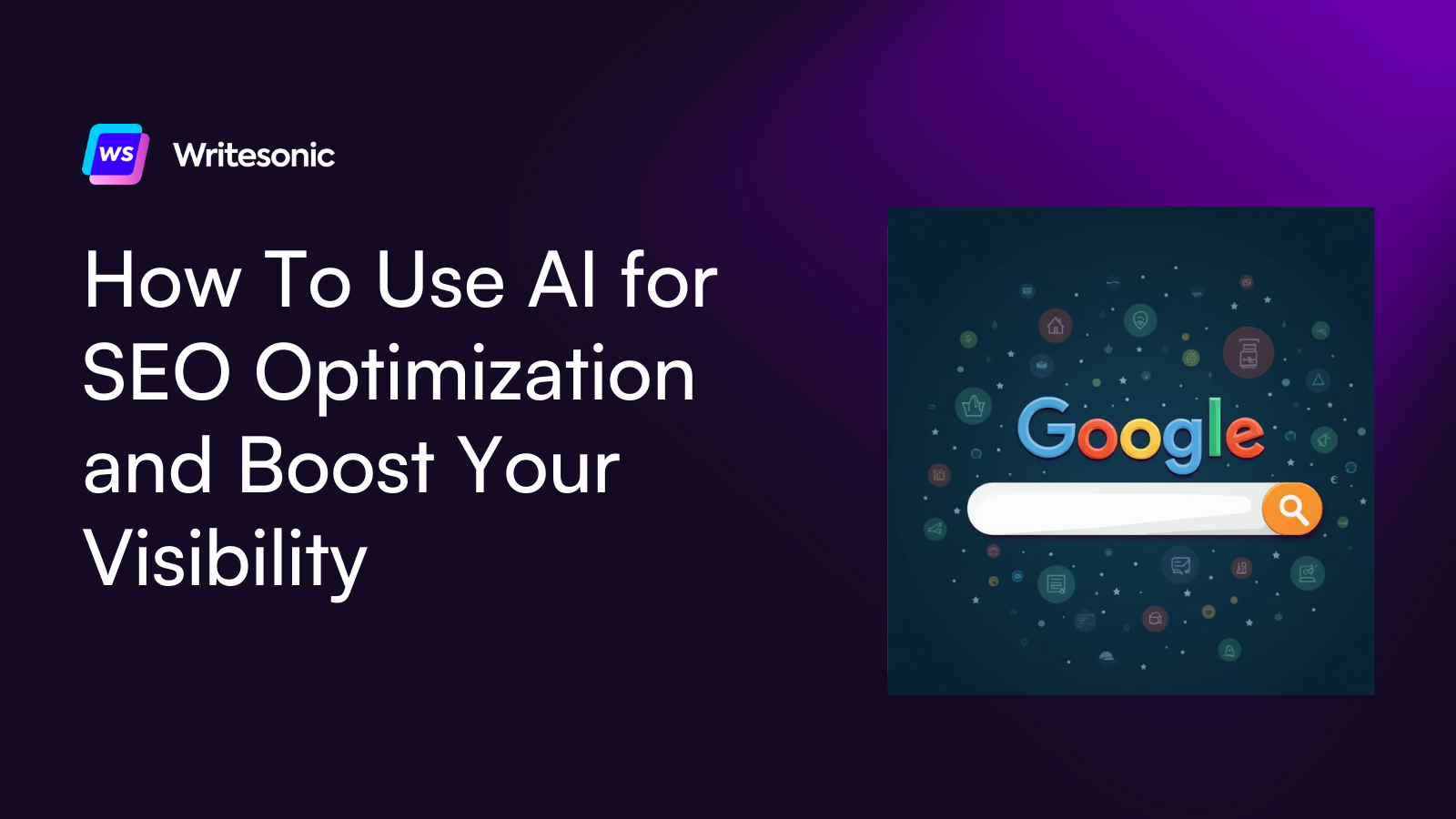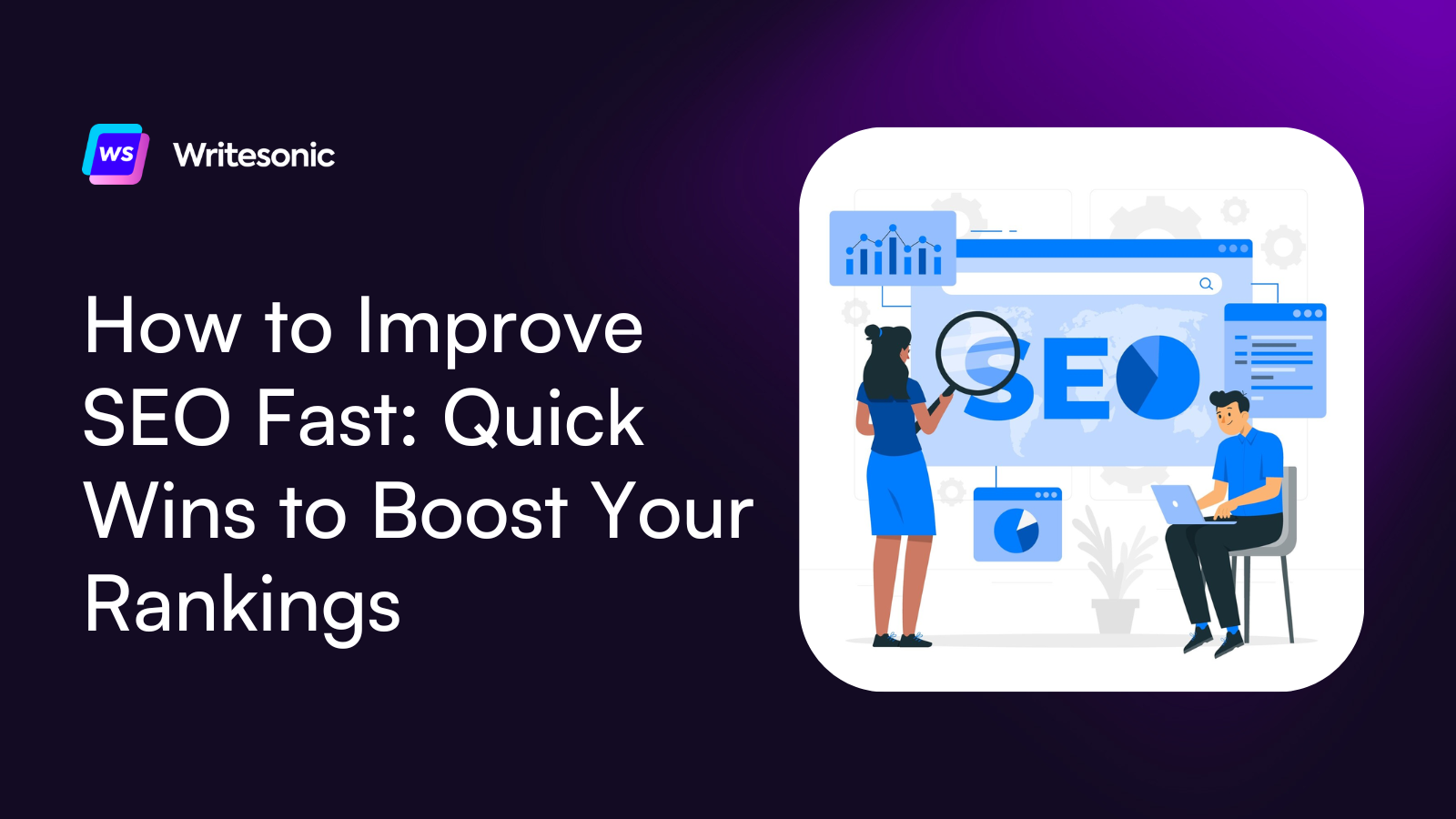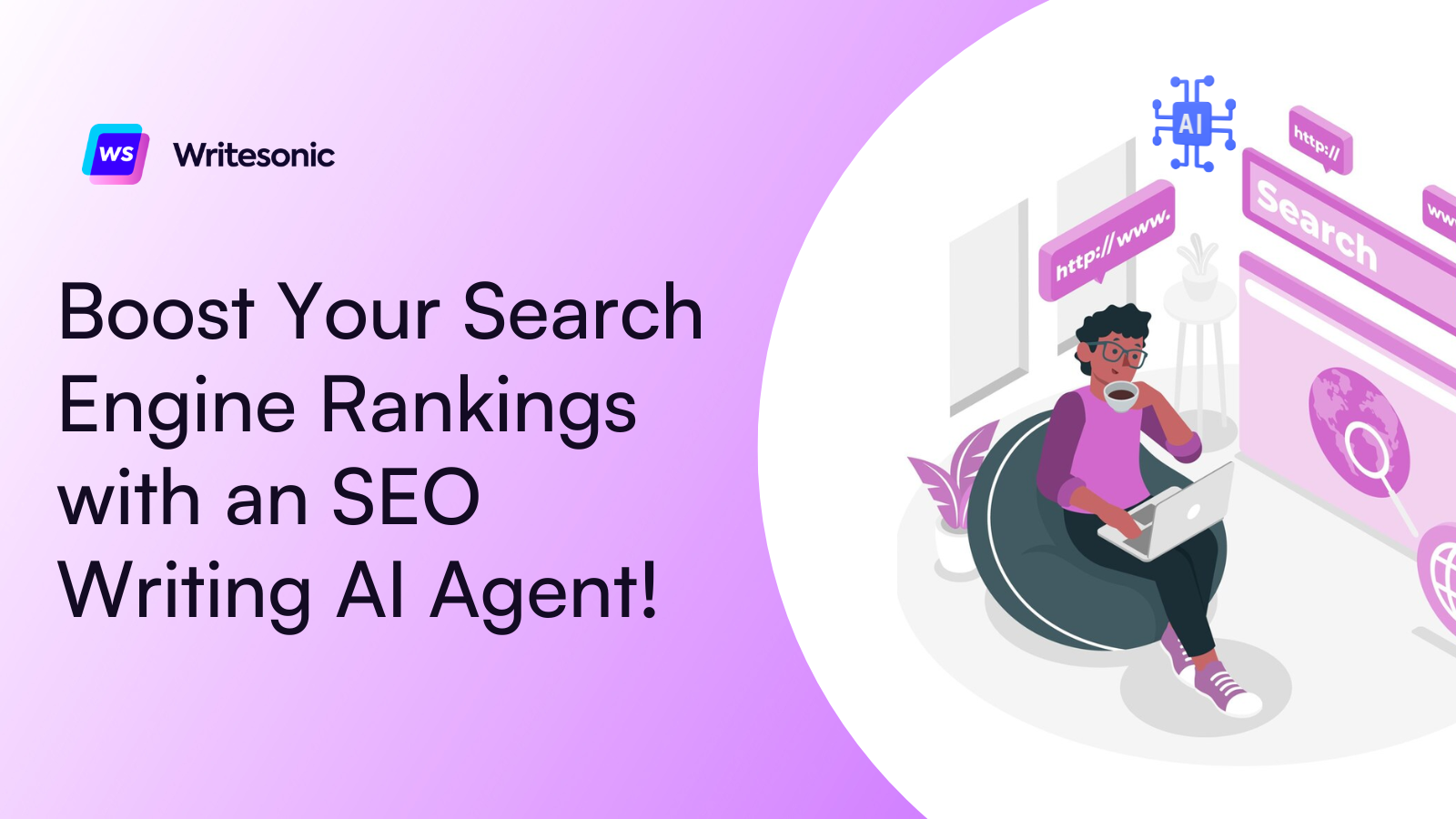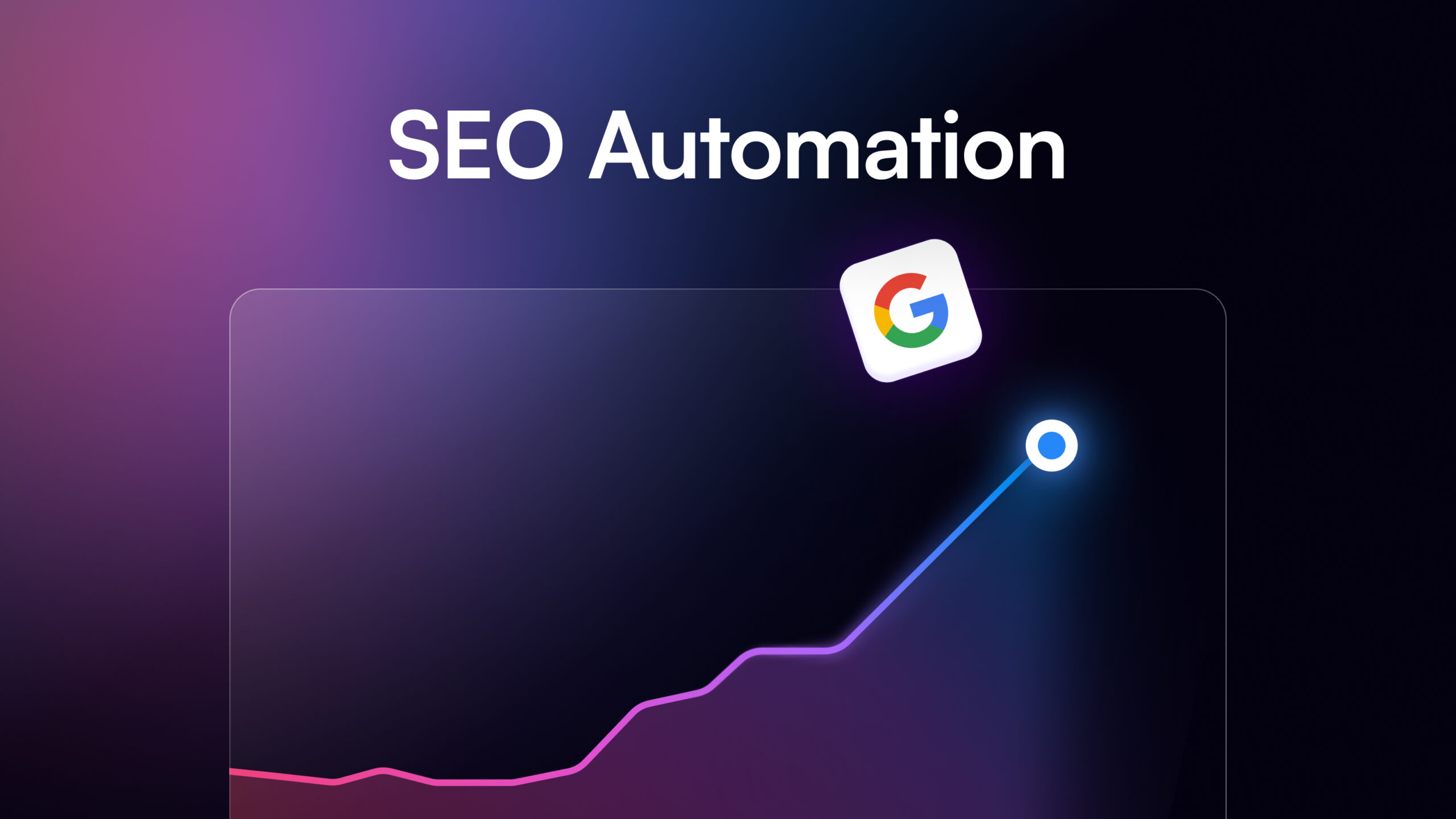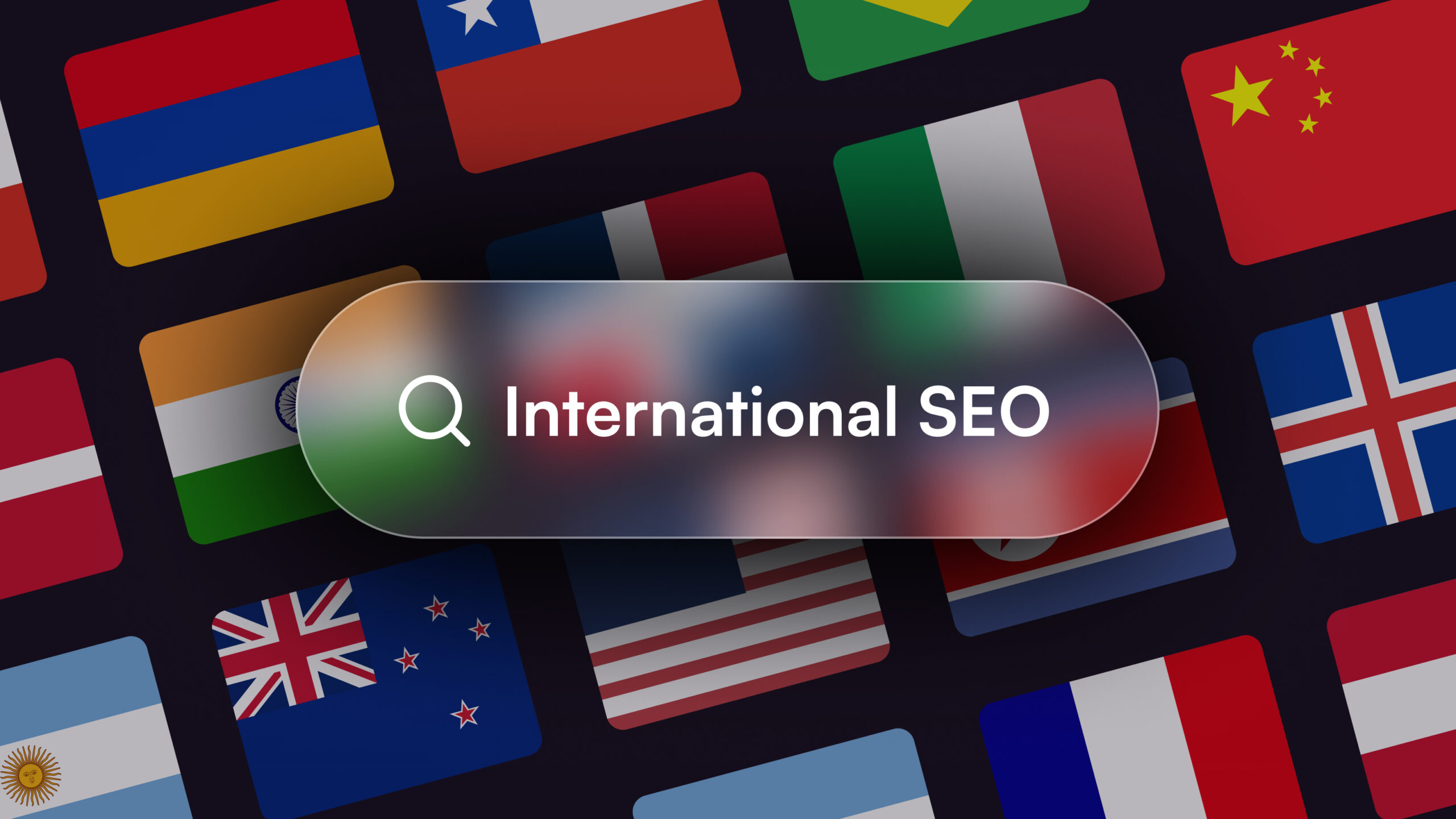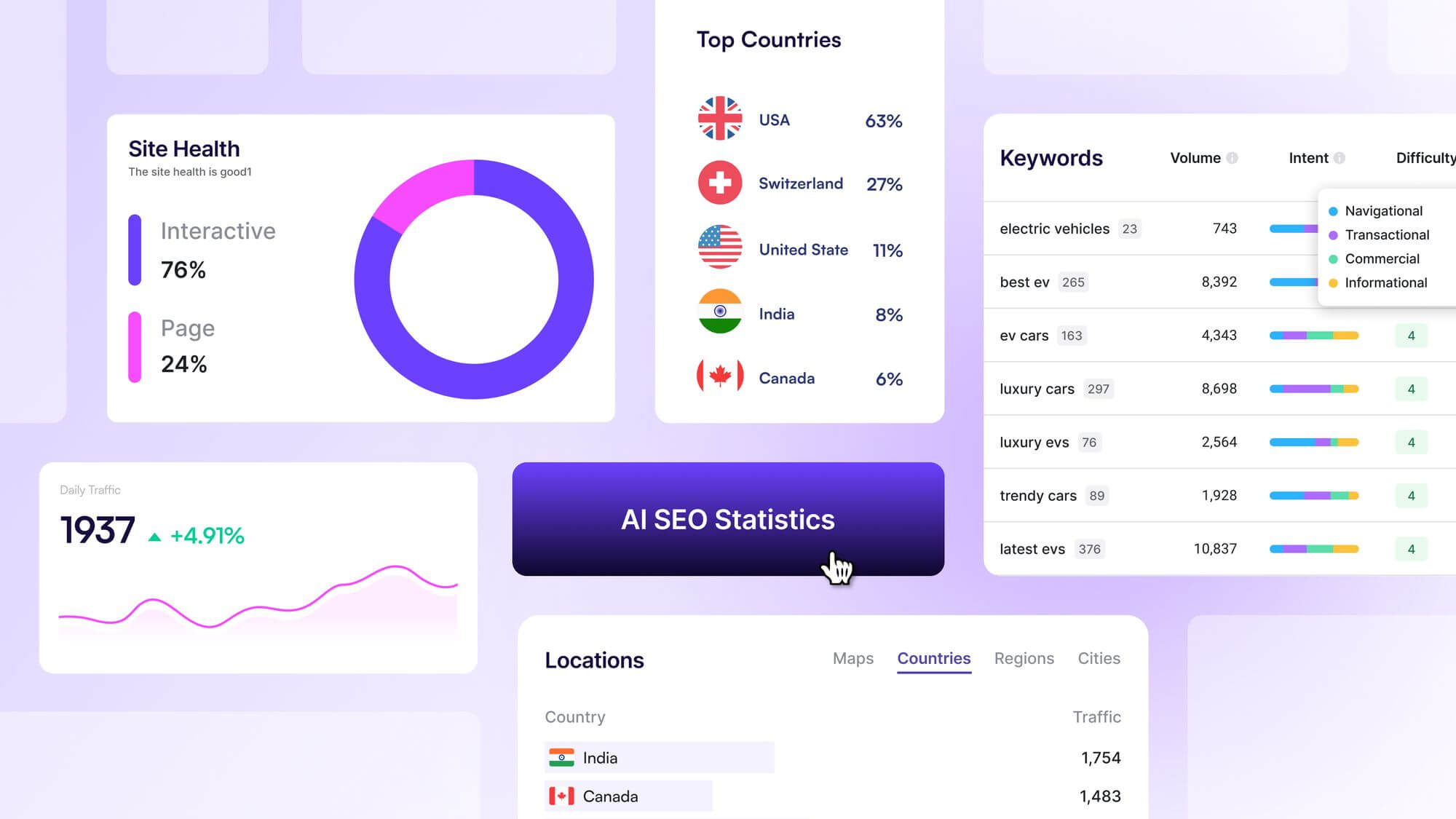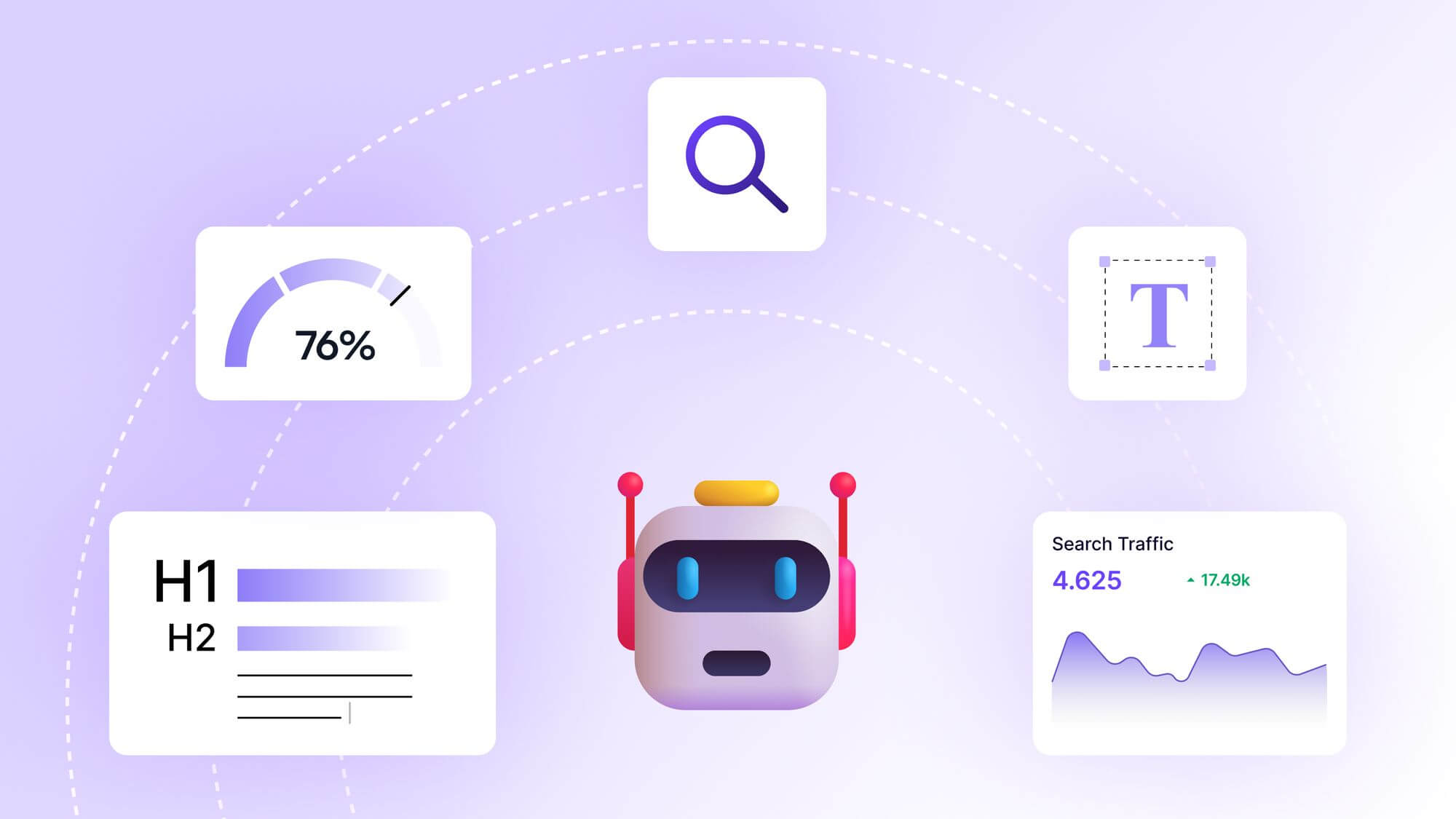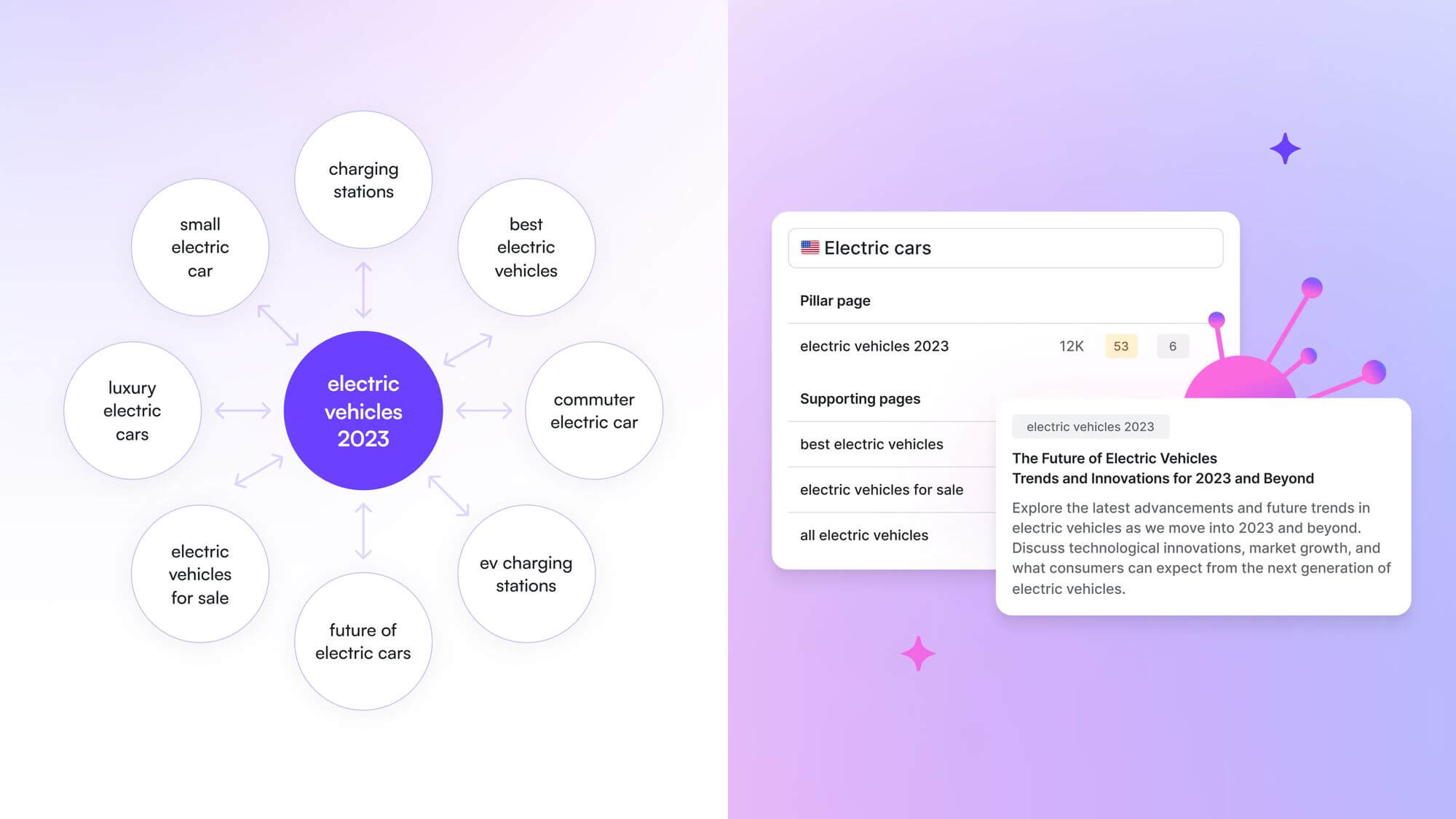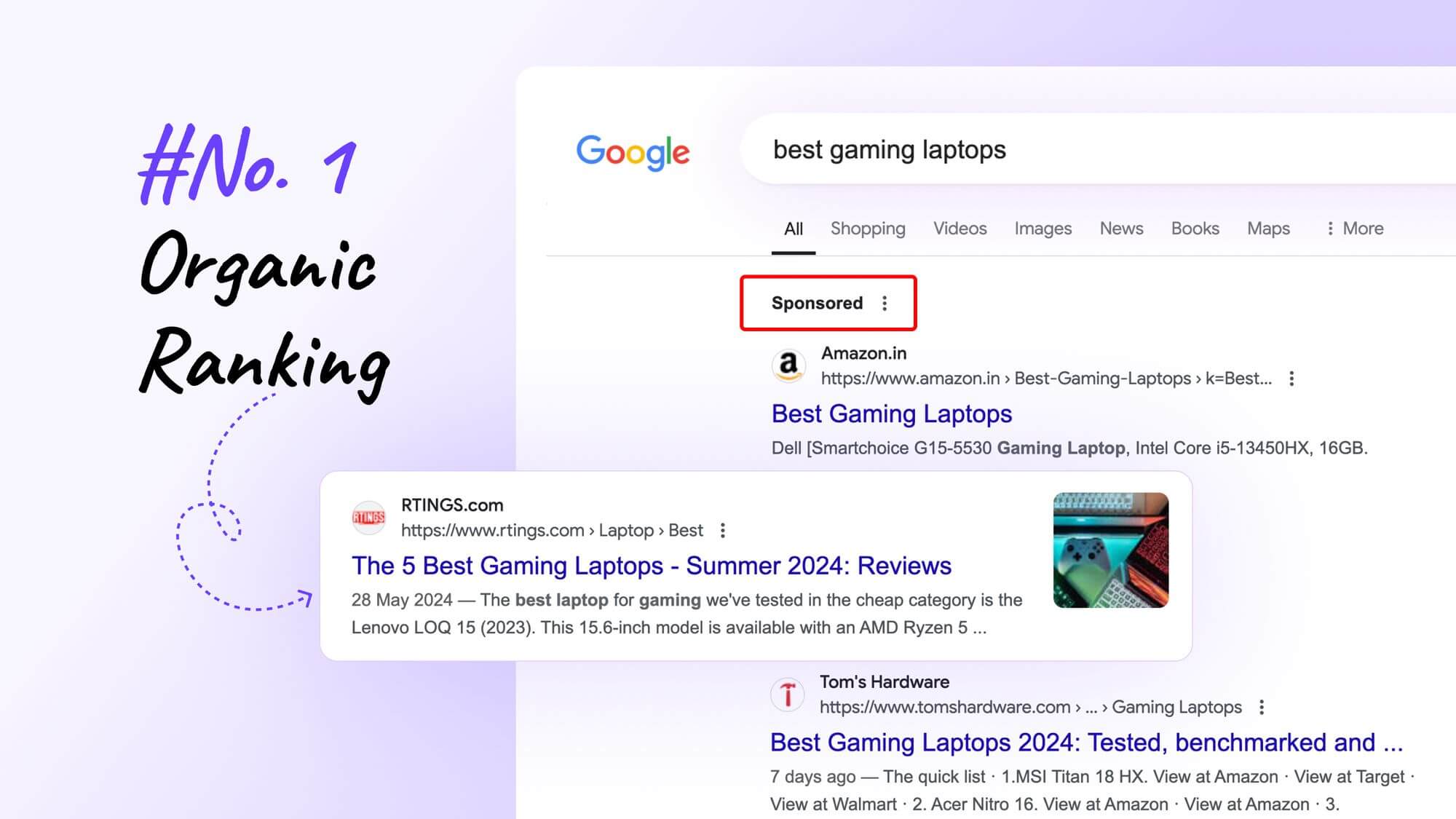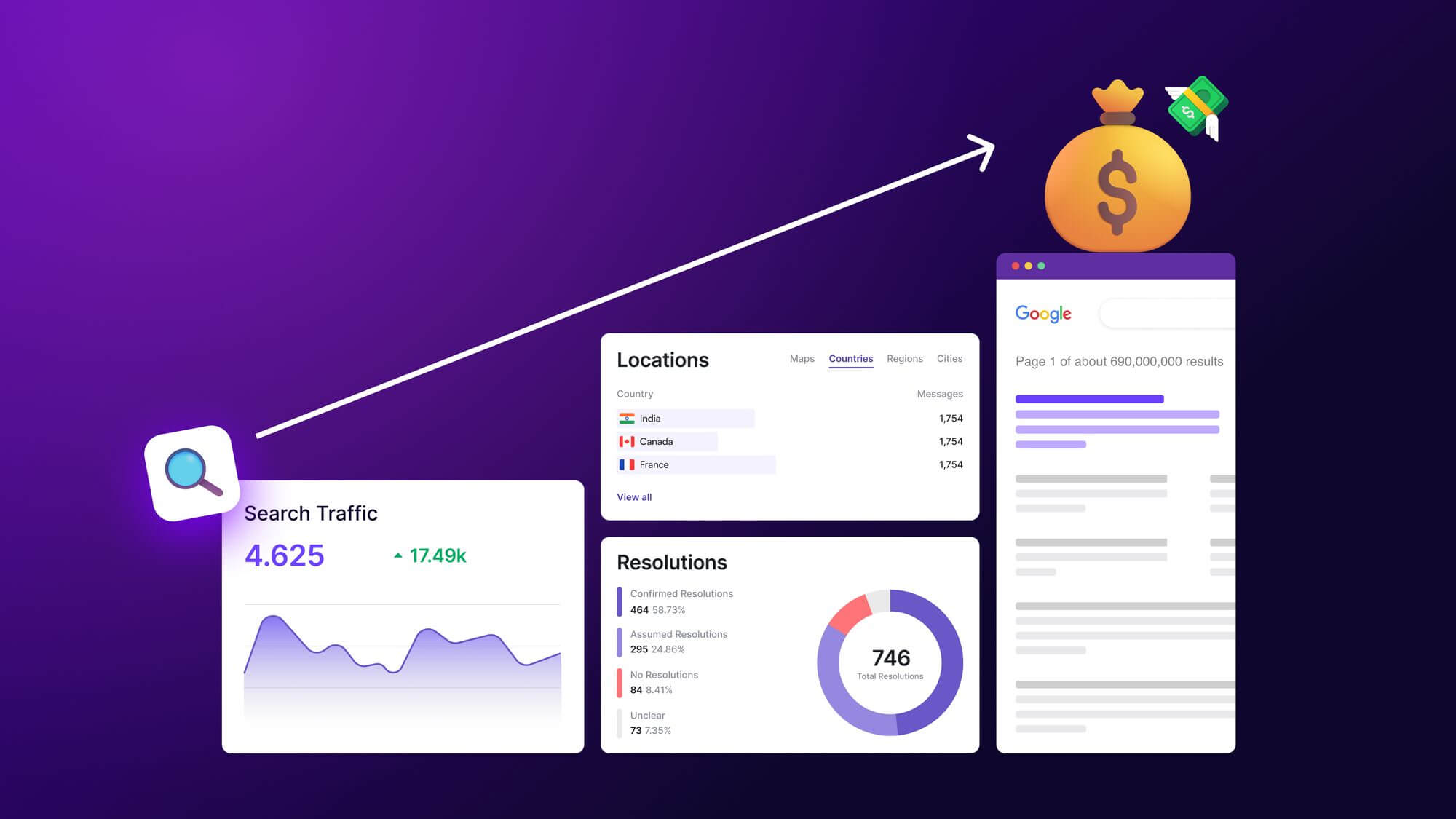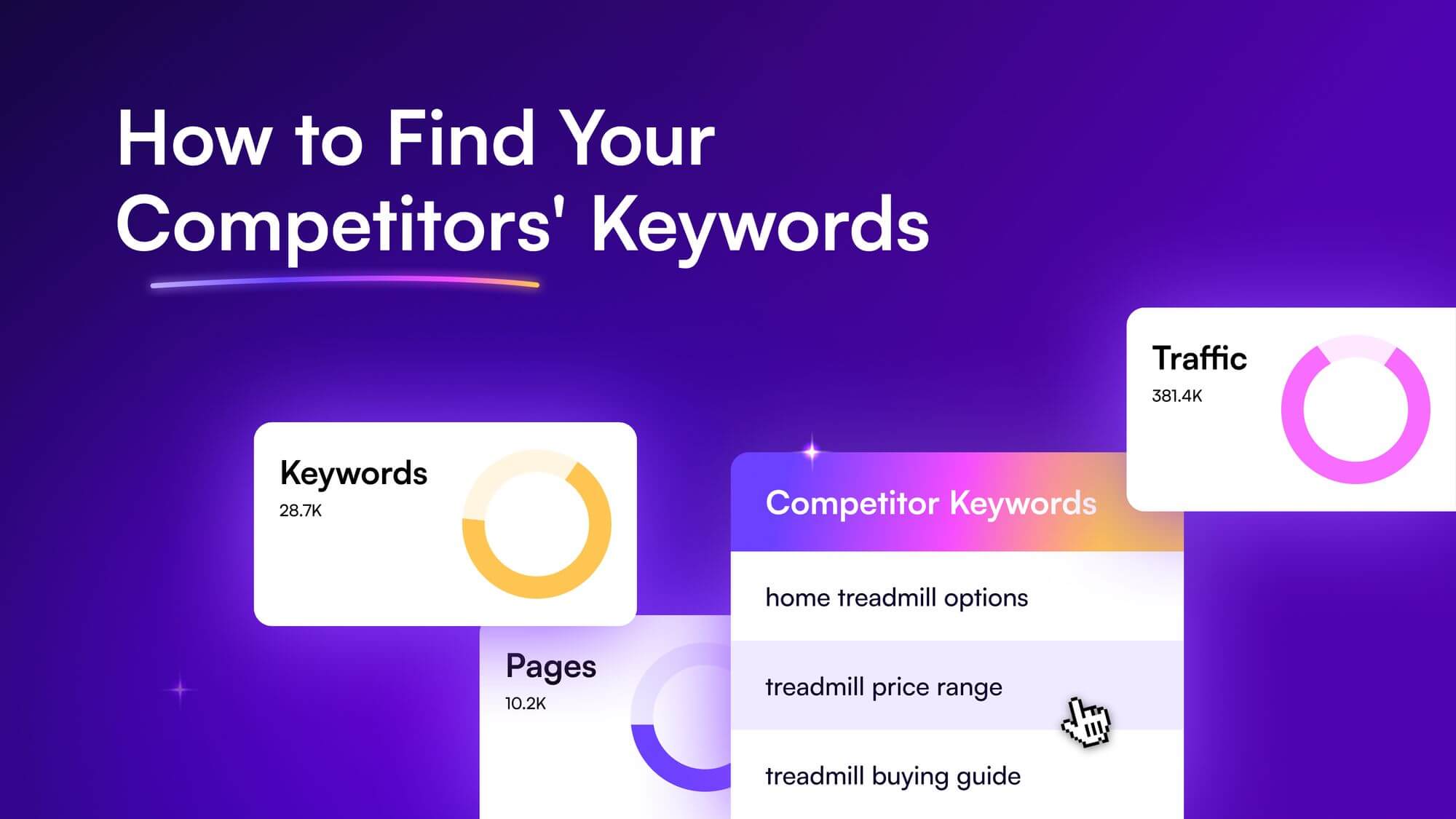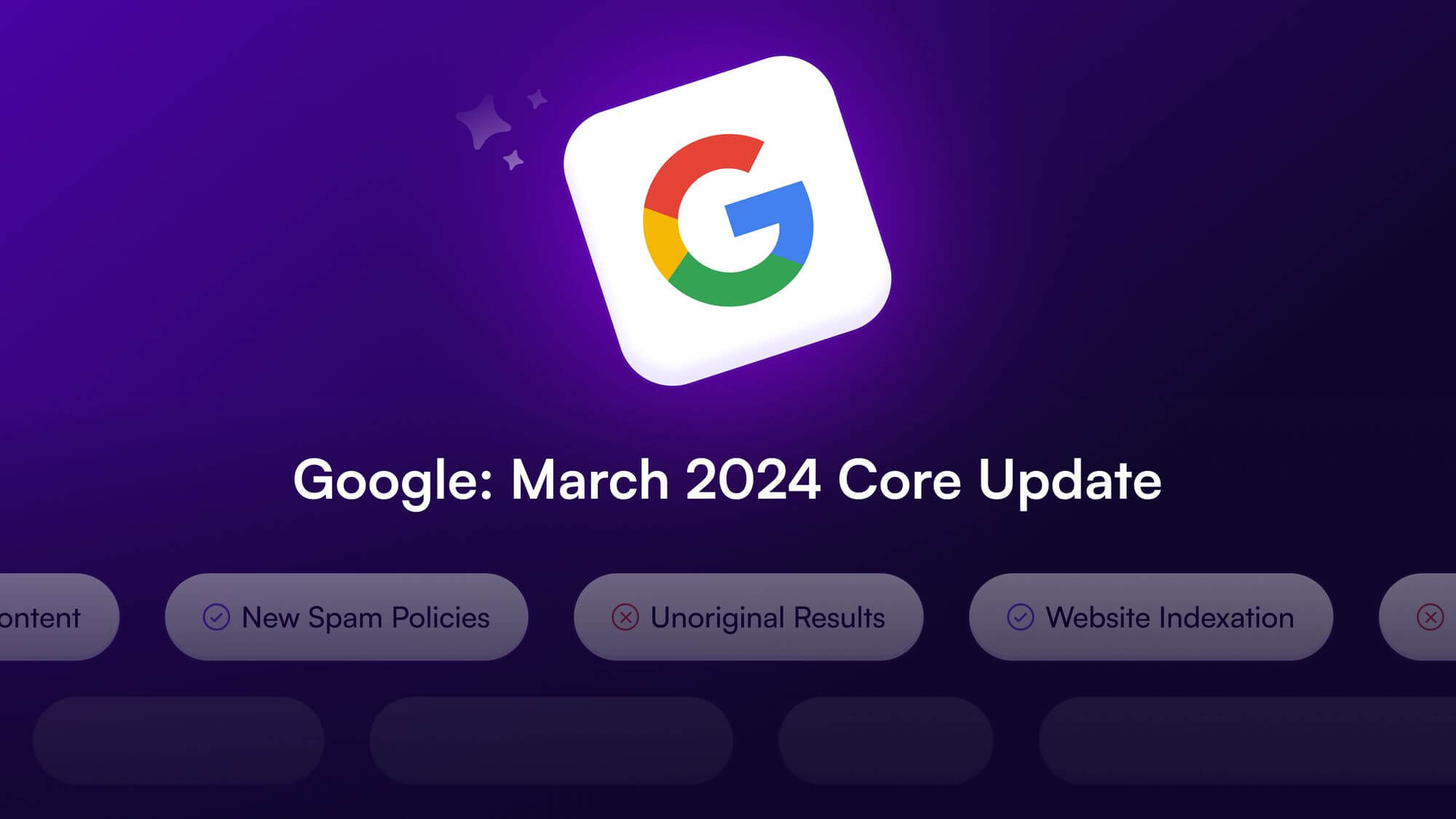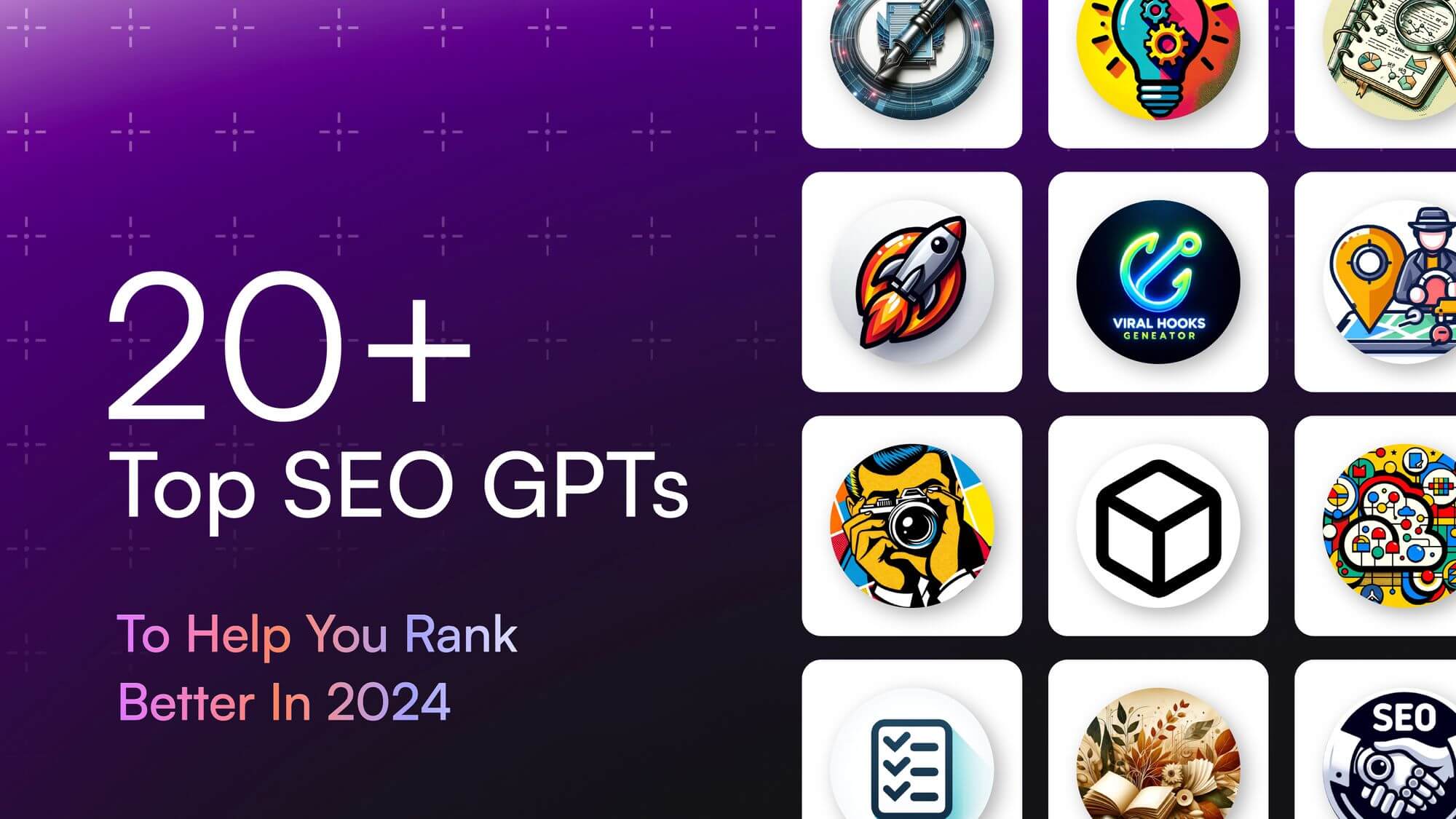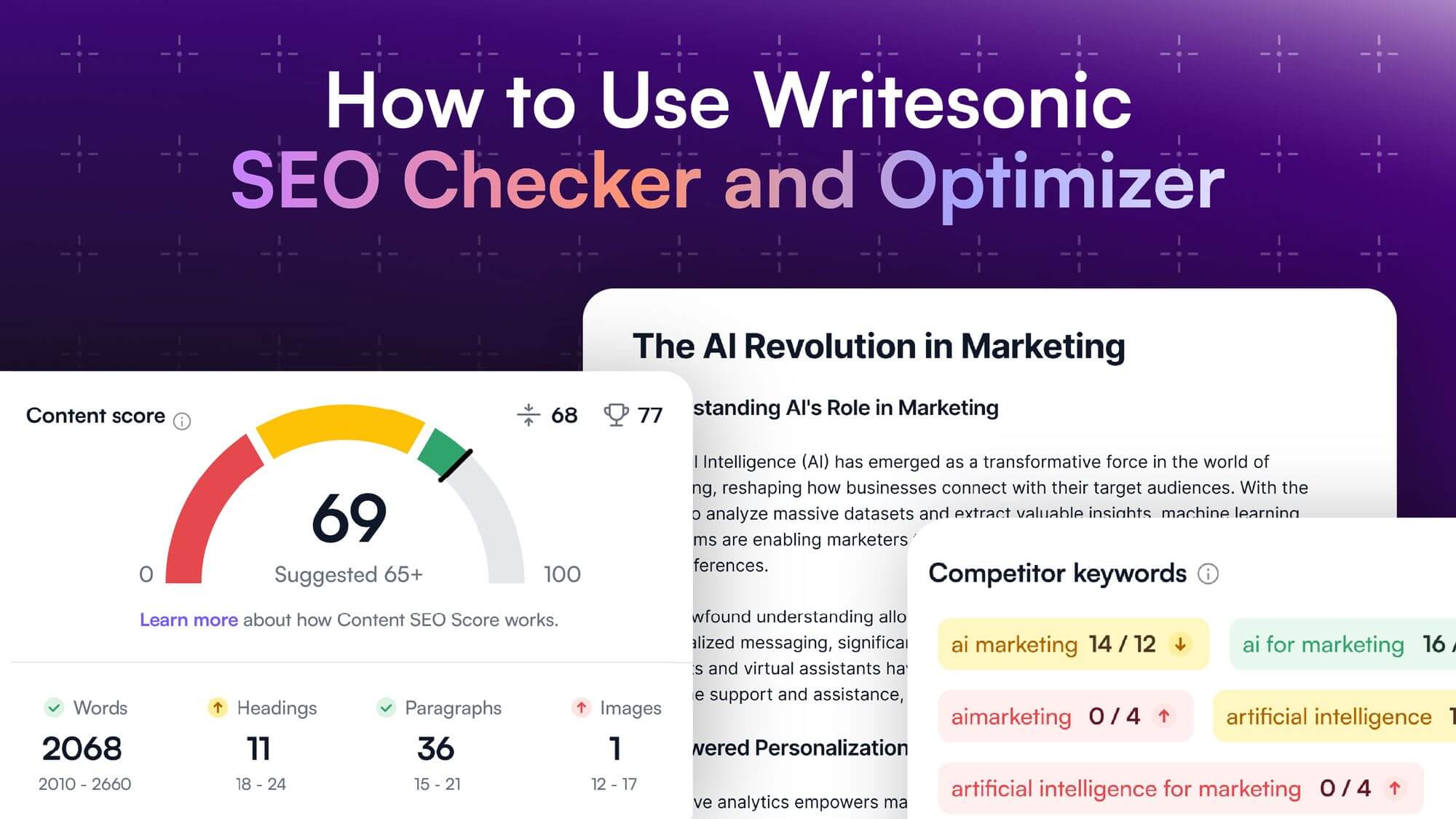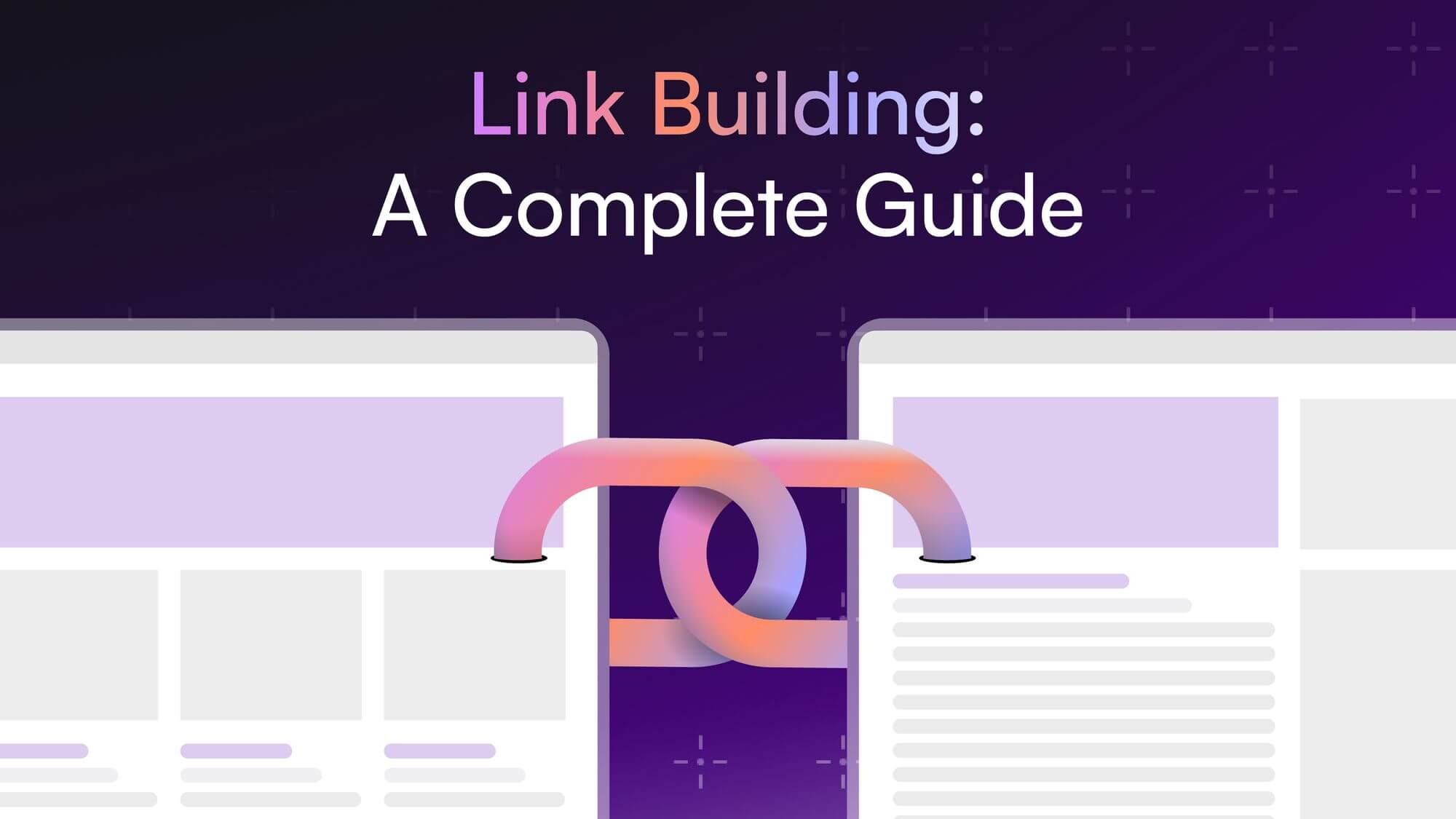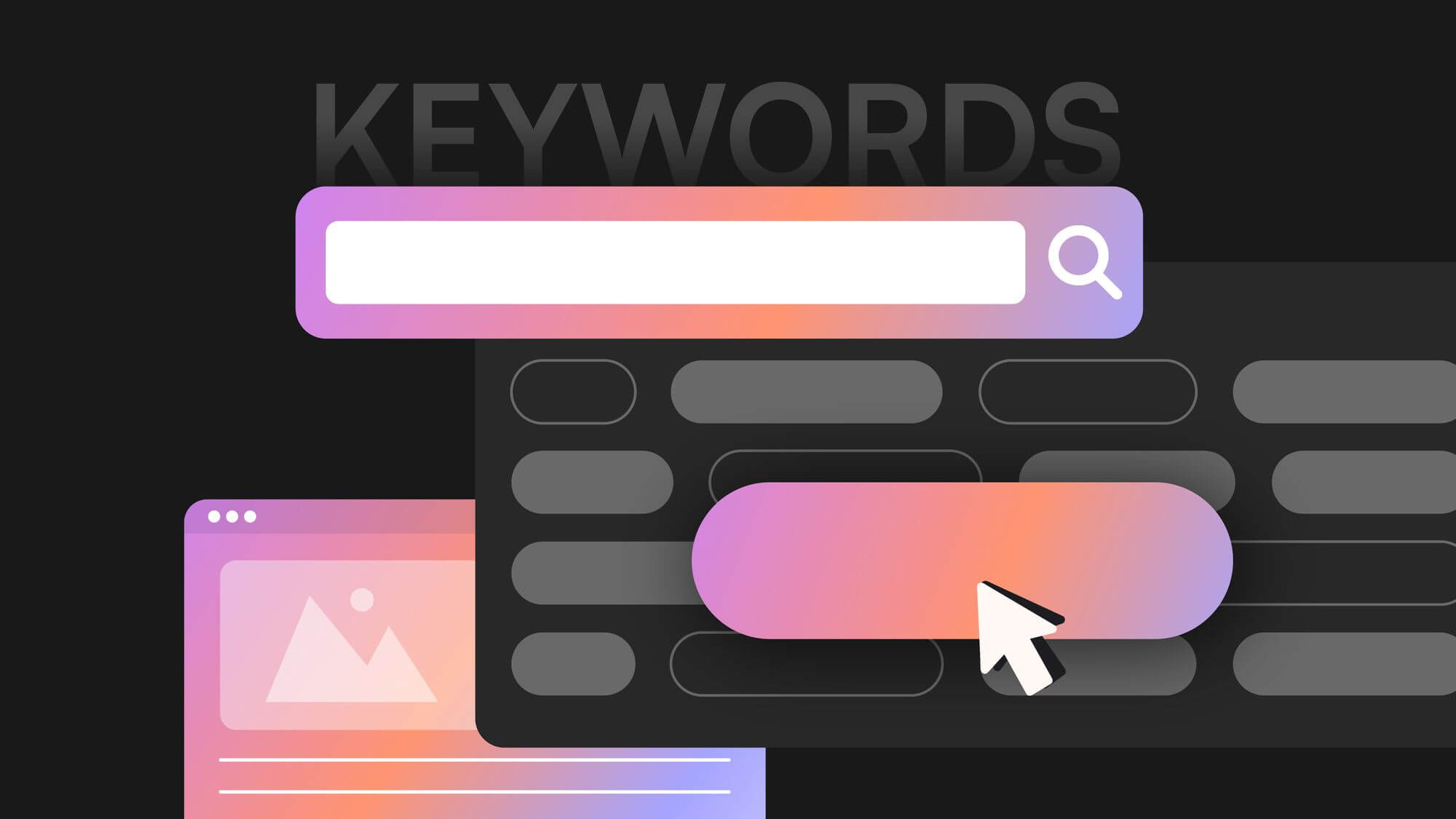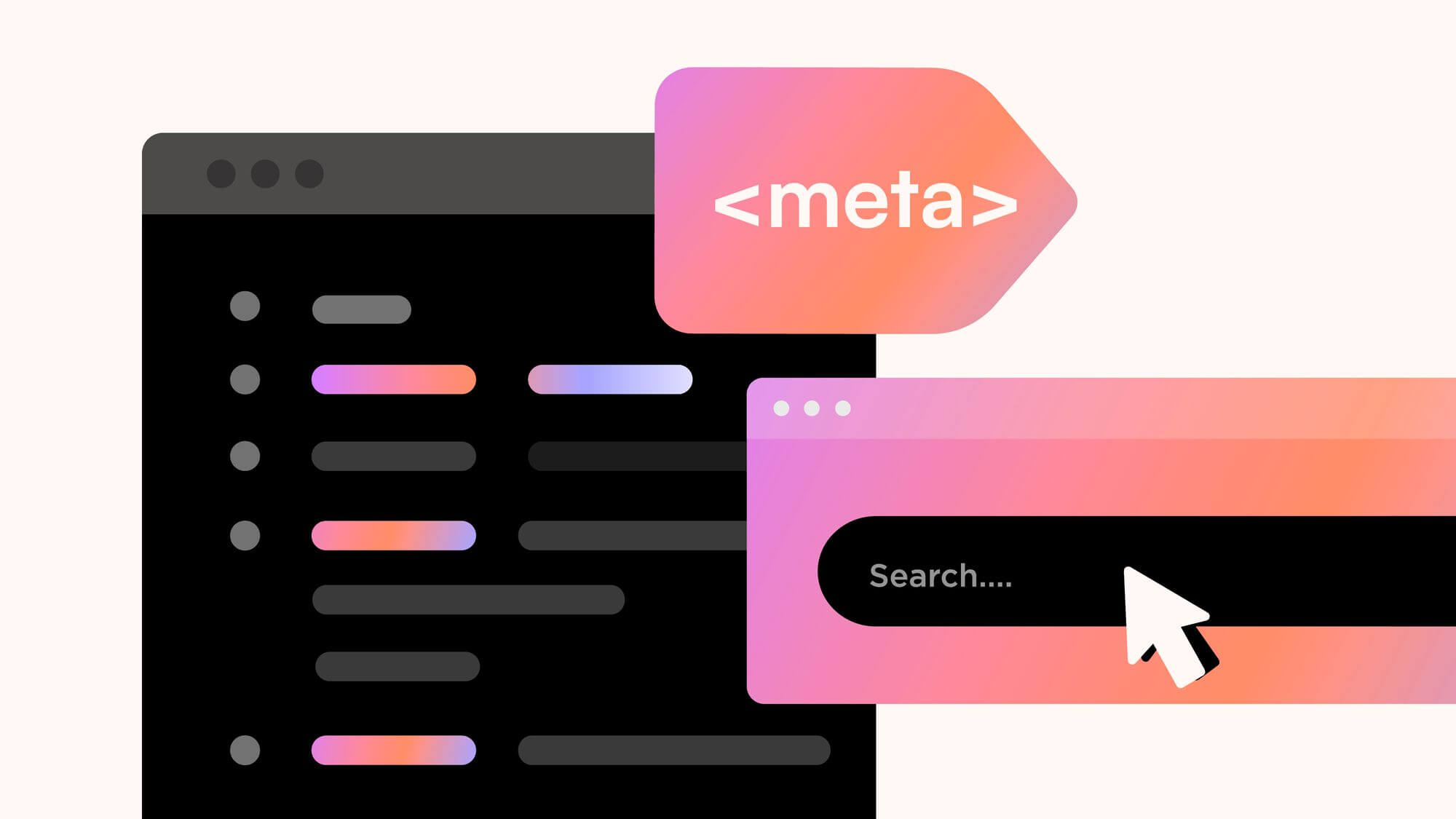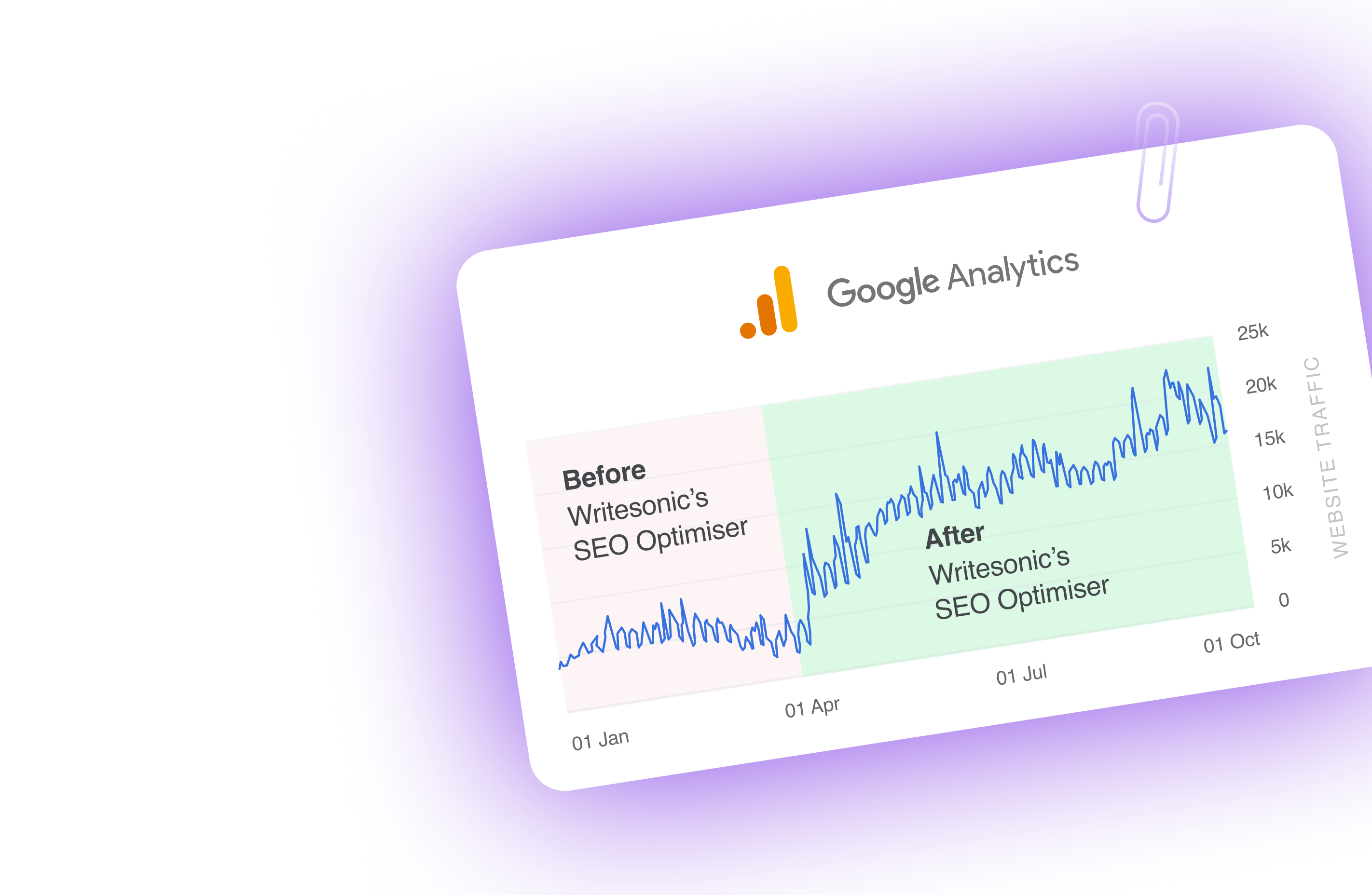In 2025, AI overviews are taking the top spot on many of the Google search queries. These overviews, that are synthesized using AI, are overtaking traditional SERP features like the featured snippets.
If you want to enjoy the same top position as before or want to rank on top of SERPs, you need to know how to rank in AI overviews. However, since AI is involved, the usual SEO tactics aren’t enough to rank your content at the top.
In this guide, we’ll discuss step-by-step how to rank for AI overviews, along with what you need to keep in mind and what tools will ease the process.
Let’s get started.
What are AI Overviews?
AI Overviews are AI-generated summaries that appear at the top of search results. They provide quick answers to the search queries, synthesized from multiple sources — usually the top ranking SERPs.
Unlike traditional featured snippets, which pull direct excerpts from a single source, AI Overviews analyze and compile insights from various web pages. They were previously known as Search Generative Experience (SGE) and worked similarly, helping users find information faster without clicking through multiple websites.
However, this new feature is bringing changes in how we approach SEO, as simply ranking in the top SERPs is no more enough. Optimizing for AI Overviews requires concise, well-organized, and trustworthy content to increase the chances of being cited in Google’s AI-driven results.
We’ll discuss in detail how you can optimize content to maximize your chances of appearing in AI overviews. But before that, you need to understand how they are different from the usual featured snippets.
AI overviews vs. featured snippets
Both AI Overviews and featured snippets appear at the top of Google’s search results. However, they are quite different in how they retrieve and display information.
For instance, featured snippets extract a direct excerpt from a single search result. It often displays a short paragraph, list, or table as the answer, along with the link to the given web page.
In contrast, AI Overviews generate a synthesized response by pulling insights from multiple sources. It provides a broader and more contextualized answer, which may include a mixture of definitions, bullet points, tables, and even multimedia elements.
The information is not displayed as it is, but rather modified using AI. They also all the source links on the side, and highlight where each piece of information comes from.
In a SERP where both featured snippets and AI overviews are present, the featured snippet appears below the AI overviews. However, both intend to provide zero-click results for a query.
But remember: just because your web page is one of the top SERP results or even selected as the featured snippet, doesn’t mean it’s automatically included in the AI overview. Many times, the first few SERP results aren’t displayed in the AI overview. That’s because they might be optimized for the usual SEO, but aren’t optimized for AI recognition.
Since AI overviews rank above featured snippets, the links displayed naturally get more attention. That’s why, it’s important to optimize your content specifically for AI overviews if you want to continue getting good traffic.
How AI Overviews Extract and Rank Content
To optimize content for AI overviews, let’s first learn how this SERP feature extracts and ranks content.
Google’s AI Overviews don’t just pull random information — they carefully analyze and synthesize content from multiple authoritative sources. The AI prioritizes clarity, credibility, and relevance, selecting content that best answers the query in a structured, easy-to-understand manner.
Several factors influence what content gets included in an AI Overview:
- Direct, well-structured answers: Google favors content that answers queries clearly and concisely, often within the first few sentences.
- E-E-A-T signals: Experience, Expertise, Authoritativeness, and Trustworthiness remain crucial. AI prefers content from credible, high-quality sources.
- Formatting and readability: Well-structured content with clear headings, bullet points, and short paragraphs is easier for AI to process and extract.
- Multimedia elements: AI can extract insights from images, tables, and videos, improving the chances of inclusion.
- Semantic relevance: AI understands topics contextually, favoring content that aligns with user intent rather than just keyword usage.
If your content ticks all these boxes, there’s a good chance it might be displayed in the AI overview for that specific query.
11 Steps to Rank in AI Overviews
Step 1: Identify If a Given Query Generates an AI Overview
Before optimizing content for AI Overviews, you need to determine whether that particular search query triggers the SERP feature or not. In traditional SEO, some content always ranks on the first page or in the top spots.
But AI overviews are different. Currently, they are only displayed for 30% of Google search queries. That means, you don’t even need to optimize content for AI overviews with most queries.
However, if you’re targeting problem-solving or question-based queries, then it’s best to optimize your content, as more than 74% of such queries display AI overviews.
If you want to be completely sure, here’s how to check if an AI Overview appears for your target query:
- Perform a Google search: Enter the keyword and observe whether an AI-generated summary appears at the top.
- Use SEO tools: Platforms like Semrush and Ahrefs are beginning to track AI Overview presence in search results. This method is useful if you want to test the same query for multiple locations.
However, if an AI overview doesn’t appear for your target query, it may appear for one of its variations. Thinking of every possible keyword variation and testing it in an SEO tool might easily become tedious.
- Ask an SEO AI Agent: The best and quickest way to test if a query generates AI overviews is by asking an SEO AI agent. SEO AI agents like Chatsonic can automatically check for multiple locations and keyword variations, giving you the exact answer to which keywords generate AI overviews.
Here’s an example:
Check how it identifies the exact locations and type of SERP features present. It also gives the keyword variants and actionable insights for you to target the right market.
If a query consistently generates an AI Overview, it presents an opportunity to optimize content strategically to be included as a source. If not, traditional ranking tactics may still be the best approach.
Step 2: Write in Plain, Easy-to-Understand Language
AI Overviews prioritize clarity. Google’s AI isn’t looking for complex jargon or overly technical explanations — it values content that is easy to read and digest.
The goal of AI-overviews is to deliver simple explanations that readers can quickly understand, and that should be your goal too.
Writing in a natural, conversational tone helps AI recognize content as user-friendly:
- Instead of dense paragraphs, break ideas into short, direct sentences.
- Avoid long-winded explanations and unnecessary words.
- If a concept requires technical details, explain it in simple terms first, then add depth if needed.
For example, instead of writing:
“Machine learning algorithms use complex mathematical models to identify patterns in large datasets, enabling predictive analytics and automation.”
Try this:
“Machine learning helps computers recognize patterns and make predictions based on data. It powers things like recommendation systems and voice assistants.”
Another example:
Instead of: “The mitochondria function as the powerhouse of the cell, utilizing oxidative phosphorylation to generate adenosine triphosphate (ATP) as an energy source.”
Try: “Mitochondria are tiny structures inside cells that produce energy, helping the body function properly.”
Think of how Google’s AI scans and synthesizes information. Content that’s clear, well-structured, and free of fluff is more likely to be extracted and ranked. The easier your content is to process, the higher the chances of being included in AI Overviews.
Step 3: Answer the Main Question as Early as Possible
Google’s AI prioritizes content that gets straight to the point. If your content buries the main answer under long introductions or unnecessary background information, it’s less likely to be featured in an AI Overview. The sooner you provide a clear, direct answer, the easier it is for Google to extract and use your content.
A good approach is to lead with the answer and expand on it later. This technique mirrors the inverted pyramid style used in journalism—starting with the most critical information before moving into details and background.
The inverted pyramid method ensures that even if someone only reads the first sentence or two, they still get the essential takeaway. In traditional articles, writers often build up to the key point with background context, but for AI Overviews, this doesn’t work. Instead, content should begin with the most relevant and direct answer before adding explanations, examples, and related information. This structure improves readability for both users and AI, increasing the chances of your content being featured.
If your content answers “What is X?”, “How does X work?”, or “Why does X happen?”, make sure the first few lines provide a concise, direct response. AI Overviews extract and rank content that delivers immediate value, so structure your content accordingly.
Step 4: Use a Question-Answer Style Format for H2s
Structuring content with question-based headings makes it easier for Google’s AI to understand and extract relevant information. AI Overviews are designed to answer user queries directly, and content that mirrors this format is more likely to be selected.
Instead of using generic or vague headings, frame them as direct questions that match what users are searching for. This aligns with how AI scans content — it looks for clear question-and-answer structures to generate responses efficiently.
For example, instead of writing “Benefits of Meditation,” write “What Are the Benefits of Meditation?” Follow it by directly answering the question, as mentioned in step 3.
This small adjustment makes a big difference. A question-based H2 signals to Google’s AI that the following content directly answers a user’s query. It also improves readability, making it easier for people to skim through and find the information they need.
Check this AI overview for the query “how to clean a microwave.”
The first link mentions the highlighted information as an answer to one of the subheadings, which is framed as a question:
Structuring subheadings as common search queries increases the chances of your content aligning with how people phrase their searches. AI prioritizes content that directly addresses user intent, and using a question-answer format helps your content fit naturally into its summaries.
Step 5: Avoid Fluff and Generic-Sounding Content
Google’s AI Overviews are designed to provide concise, information-rich summaries, which means they prioritize content that is direct, useful, and free from unnecessary filler. If your content is overly wordy, vague, or filled with generic statements that don’t add value, it’s less likely to be selected.
Fluff often comes in the form of over-explaining simple concepts, adding too much background information, or using filler words that don’t contribute to the main point. AI is trained to recognize content that is specific, actionable, and informative, so avoid writing just for the sake of increasing word count.
For example, instead of saying:
“Meditation is an ancient practice that has been around for thousands of years, used by different cultures for various purposes. Many people find it helpful in reducing stress and improving focus.”
A stronger, more AI-friendly version would be:
“Meditation helps reduce stress and improve focus by training the mind to stay present. Studies show it lowers cortisol levels and enhances concentration.”
The second version eliminates unnecessary background information and gets straight to the core message.
AI Overviews prefer content that is informative without being repetitive, so every sentence should add new value rather than just rephrasing the same idea. The goal is to deliver clear, high-quality information in as few words as possible, making it easier for Google to extract and feature your content.
Step 6: Use Lists, Tables, and Formatting for Clarity
AI Overviews favor content that is structured and easy to scan. Google’s AI pulls information from web pages in a way that makes it readable in quick, digestible formats. Using bullet points, numbered lists, and tables improves the clarity of your content, making it easier for AI to extract key takeaways.
Why Formatting Matters
Well-structured content helps AI quickly identify important information. Bullet points work well for summarizing key facts, while numbered lists are effective for step-by-step guides. Tables are particularly useful for comparisons, as they allow AI to extract data in an organized way.
Check how AI overviews display listicles and other content formats in AI overviews:
Best Practices for Formatting Content
- Bullet Points for Quick Takeaways – Use them to summarize key points, making your content more scannable.
- Numbered Lists for Instructions – If you’re explaining a process, breaking it down into steps improves readability.
- Tables for Comparisons – Organizing information into columns makes it easier for AI to extract structured data.
- Bold Keywords – Highlight important phrases so that AI and readers can quickly identify the main points.
- Short Paragraphs – Keep sentences concise and break up large blocks of text for easier reading.
By breaking down content in structured formats, you make it more AI-friendly, improve user experience, and increase your chances of ranking in AI Overviews.
Step 7: Align with the User Intent of the Search
AI Overviews prioritize content that directly matches what the user is looking for. If your content doesn’t align with search intent—whether informational, transactional, or navigational — it’s unlikely to be featured.
To optimize for AI Overviews, first determine what type of information the query demands. For instance, if someone searches “How does intermittent fasting work?”, they expect a clear explanation of the process rather than a long history of fasting.
On the other hand, a search like “top intermittent fasting apps” signals transactional intent, meaning users want a list of recommendations, not just a definition.
Google’s AI scans content for the most relevant and well-structured response, so ensure your content fully addresses the core intent. If the query is seeking a step-by-step guide, present the answer in a logical sequence. If the query demands a comparison, provide a clear, side-by-side analysis. Content that precisely satisfies search intent is far more likely to be pulled into AI-generated summaries.
Step 8: Give Strong E-E-A-T Signals
Google’s AI Overviews don’t just pull any content—they prioritize information that comes from reliable, expert-backed sources. That’s where E-E-A-T (Experience, Expertise, Authoritativeness, and Trustworthiness) comes in. If your content lacks credibility, it’s far less likely to be featured.
To improve your chances, start by demonstrating real experience. AI favors content that feels authentic, meaning firsthand insights, case studies, or expert opinions can make a difference. If you’re writing about intermittent fasting, for example, citing a certified nutritionist or including data from personal trials gives your content an edge.
Next, establish expertise. Google’s AI values content from industry professionals and well-known sources. Adding author bios with credentials or referencing high-authority publications helps reinforce your content’s legitimacy.
Trustworthiness matters just as much. AI Overviews prefer information backed by credible sources, so citing government reports, peer-reviewed studies, or respected institutions boosts your reliability. Avoid vague claims—be transparent, provide sources, and make your content verifiable.
Google’s AI is designed to filter out low-quality, AI-generated, or misleading content, so reinforcing your expertise and trust signals not only improves your ranking but also builds long-term credibility.
Step 9: Use Multimedia and Visual Enhancements
Google’s AI Overviews don’t just focus on text—they also prioritize visually engaging, easy-to-digest content. Adding images, videos, infographics, and tables can increase the chances of your page being featured. AI is designed to present information in the most user-friendly way possible, and multimedia elements improve clarity, retention, and engagement.
A well-placed infographic can simplify complex concepts, while a comparison table helps structure data in a way that AI can easily extract. If you’re explaining a process, using a step-by-step diagram makes it easier for users to follow—something Google values when selecting content for AI Overviews.
Videos are another powerful tool. Google often pulls video content directly into AI Overviews, especially from YouTube. If your article includes a relevant, well-structured video summary, it can boost your visibility.
Beyond just AI recognition, multimedia improves user experience metrics like dwell time and bounce rate, signaling that your content is valuable. The goal is to enhance readability and comprehension, making it effortless for both users and AI to extract key insights.
Step 10: Cite Credible Sources
Google’s AI Overviews prioritize content that is well-sourced and backed by authoritative references. AI is designed to filter out unreliable, misleading, or purely AI-generated content, making credibility a critical factor in ranking. If your content lacks proper sourcing, it’s less likely to be featured.
To increase your chances, cite authoritative and trustworthy sources throughout your content. Google favors links from government websites, academic institutions, scientific journals, and industry leaders. For example, if you’re writing about nutrition, referencing studies from the National Institutes of Health (NIH) or Harvard Medical School adds credibility. If you’re covering marketing trends, citing reports from Google, HubSpot, or McKinsey strengthens your authority.
It’s not just about linking to sources—how you present citations matters too. Instead of vaguely stating, “Studies show that intermittent fasting improves metabolism,” be specific:
“A 2023 study published in the Journal of Nutrition found that intermittent fasting led to a 15% increase in metabolic efficiency over 12 weeks.”
This approach shows accuracy and transparency, which AI favors when selecting content for Overviews.
Additionally, avoid citing low-authority sources, outdated research, or user-generated content from forums and low-quality blogs. Google’s AI prioritizes fresh, well-researched information, so updating your sources regularly can help maintain ranking potential.
By integrating credible sources into your content, you reinforce trust, improve AI readability, and increase your likelihood of being featured in AI Overviews.
Step 11: Use an SEO AI Agent
Google’s AI Overviews are structured in a way that prioritizes clarity, conciseness, and direct answers. And there are multiple steps to follow, as discussed above.
If you’re having trouble formatting your content in a similar way, you can simply let an SEO AI agent optimize the content for you. Here’s an example of how we let our SEO AI agent Chatsonic format out blog content for AI overviews:
Notice how it reorganizes the information to make it succinct and direct. The answer to the query is presented in the first sentence itself, with the following few sentences giving the supporting details — a good strategy to ensure your article appears in an AI overview.
The SEO AI agent automatically optimizes the content for AI overviews according to the best format suitable for that query. Instead of following each step manually, you can rank in AI overviews in minutes and also optimize bulk content using AI.
What to remember
While optimizing for AI Overviews can increase visibility, it doesn’t guarantee more organic traffic. AI Overviews are built for zero-click searches, meaning users may find what they need directly in the summary and move on without clicking through to your website.
One crucial factor to keep in mind is domain authority. Google’s AI pulls content primarily from the top 10, or at most, the top 20 results on the SERP.
If your page isn’t ranking well in traditional search results, the chances of it being included in an AI Overview are slim. In other words, ranking on AI Overviews is closely tied to standard SEO best practices — strong backlinks, high-quality content, and domain credibility still play a major role.
This means that while optimizing for AI Overviews is important, your broader SEO strategy remains just as critical. Focus on creating authoritative, well-structured content that ranks well on Google first—because if you’re not in the top results, you’re not in the AI Overview either.
Conclusion: The Future of AI Search Optimization
AI Overviews are now essential for staying visible in search results. While manual optimization takes hours of careful formatting and restructuring, there’s a simpler way for how to rank in AI overviews.
Our SEO AI agent Chatsonic automatically analyzes your content and optimizes it specifically for AI Overviews, saving you valuable time while improving your chances of ranking. Our AI marketing agent handles everything from keyword research to content structure, letting you focus on what matters most — creating great content.
Ready to rank in AI Overviews without the manual work? Try Chatsonic today and see how our AI agent can optimize your content in minutes. Start your free trial now.

